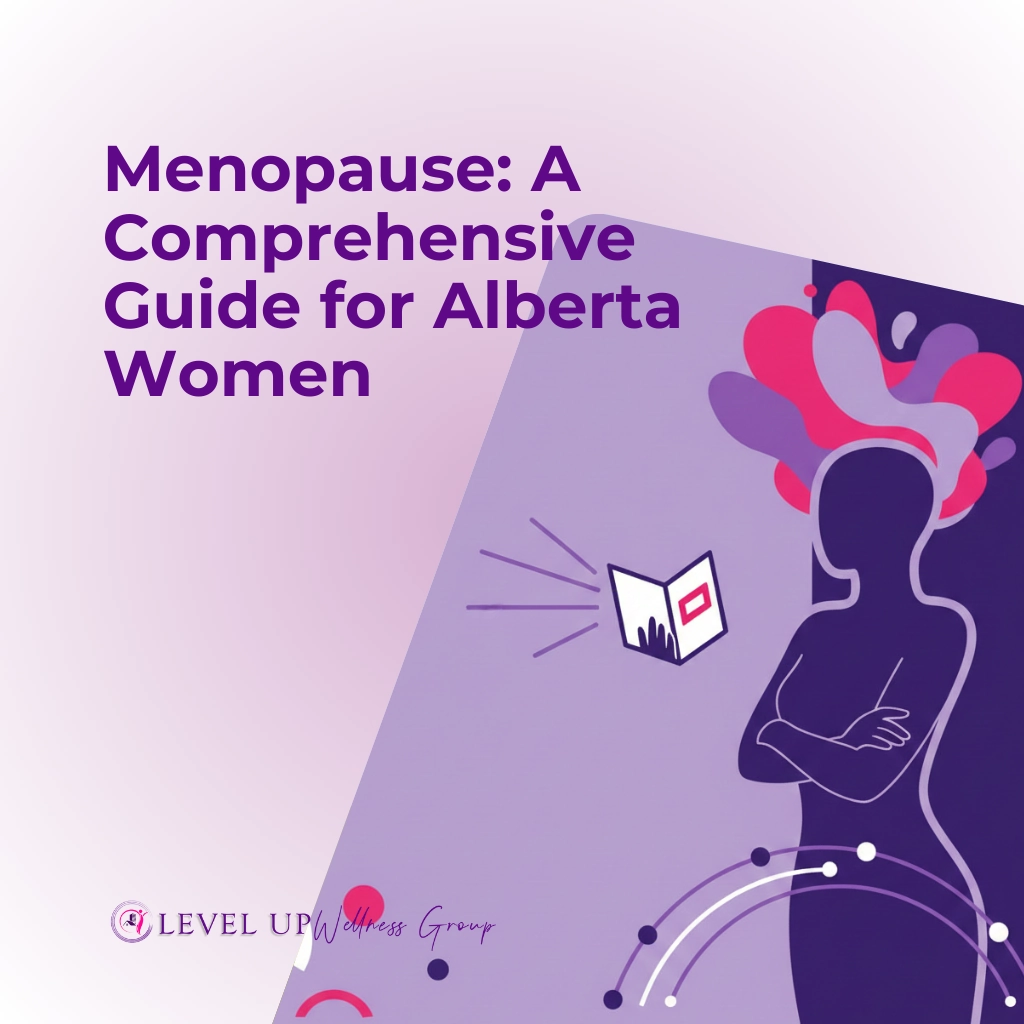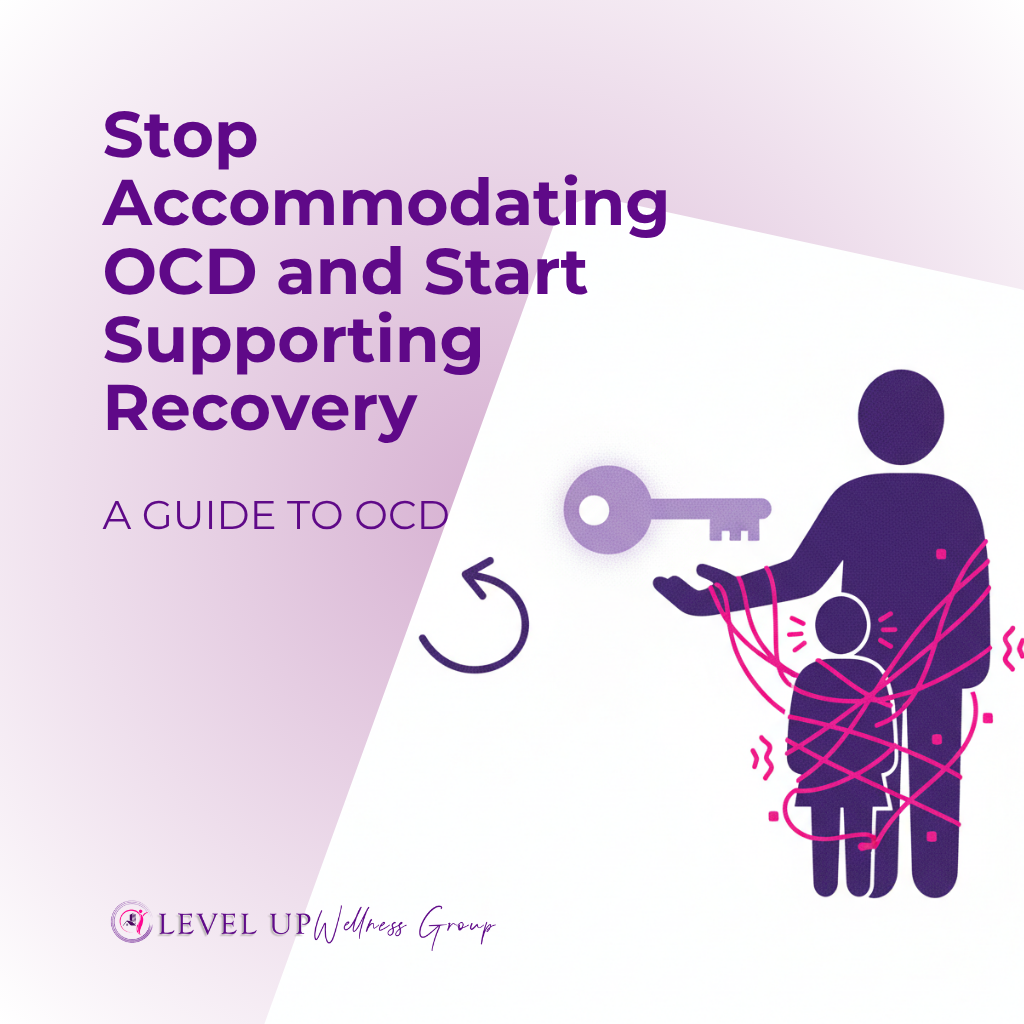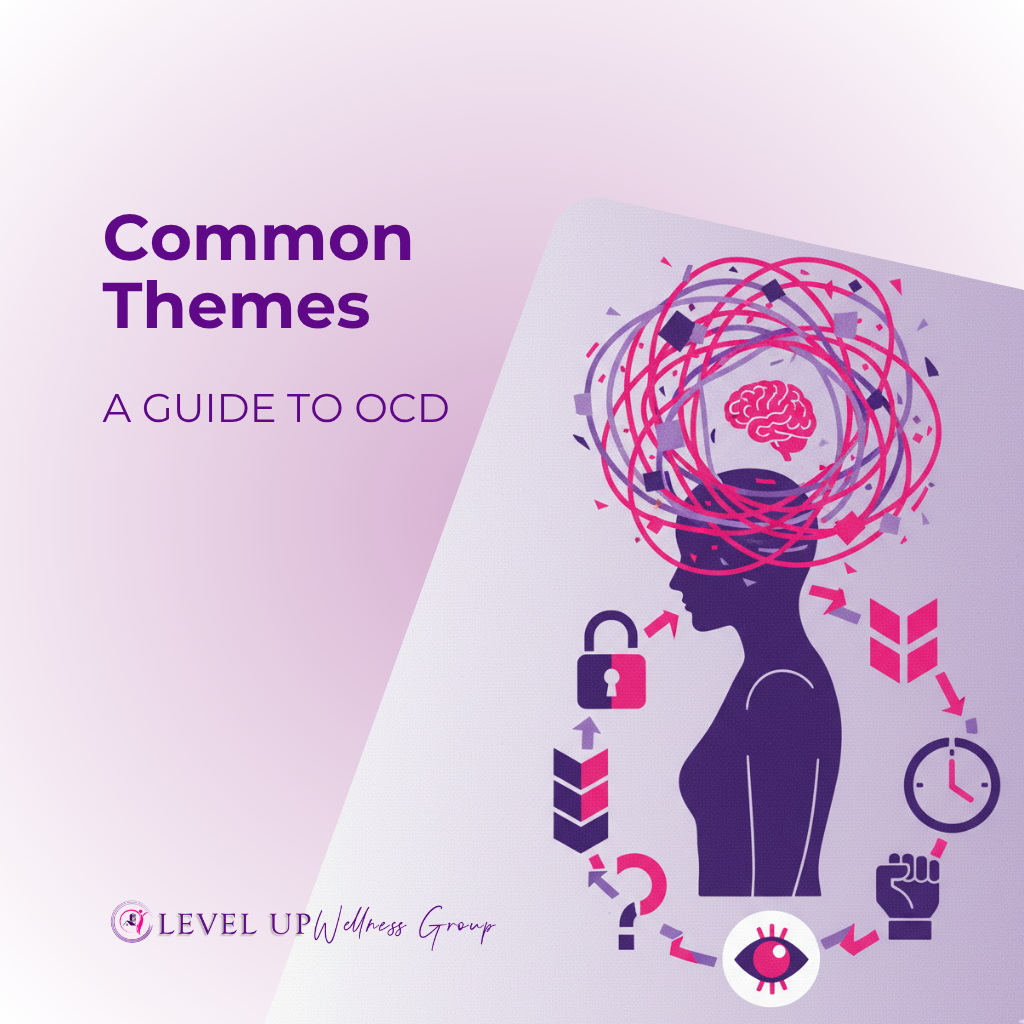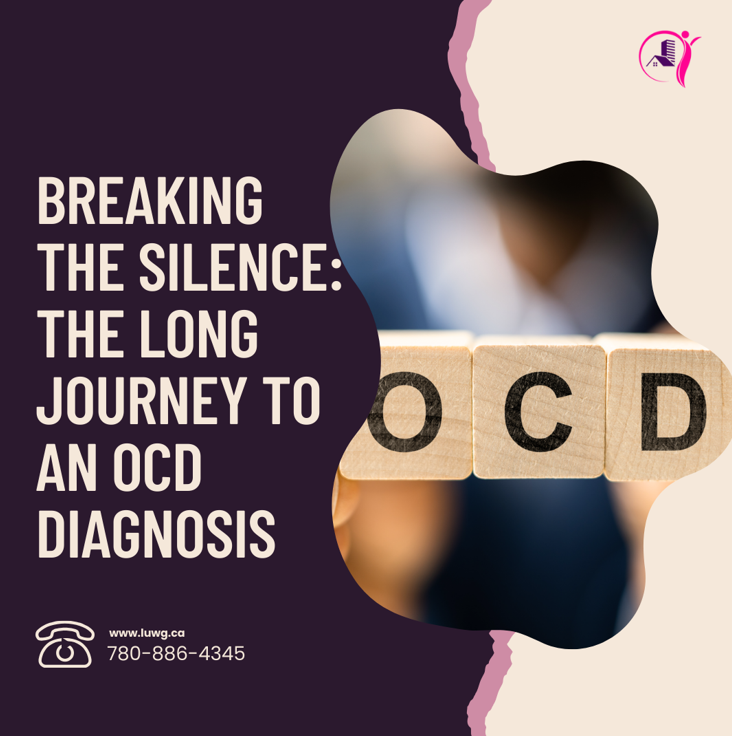
OCD Diagnosis
Did you know that on average, it takes between 14-17 years for individuals to receive a proper diagnosis of Obsessive-Compulsive Disorder (OCD)? This staggering statistic highlights a significant gap in our healthcare system, where many individuals suffer in silence, their symptoms misunderstood or dismissed. The truth is, many healthcare providers do not fully grasp what OCD truly is, often associating it solely with arranging, organizing, or contamination fears. However, OCD is far more complex and varied than these common stereotypes suggest.
Understanding the Real Face of OCD
OCD is not just about keeping things tidy or avoiding germs. It can manifest in countless ways, including both external and internal compulsions. External compulsions might involve visible actions, such as checking locks, washing hands, or rearranging objects. However, internal compulsions can be more insidious, involving mental rituals like counting, praying, mental checking, rehearsing, or repeating certain phrases silently.
One of the key indicators of OCD is the presence of unwanted intrusive thoughts, images, urges, or sensations that cause intense feelings of disgust, shame, anxiety, or fear. These intrusive experiences are often accompanied by compulsions—behaviors or mental acts that a person feels driven to perform to reduce the distress caused by the obsessions. These compulsions can range from avoidance and reassurance-seeking to more subtle internal behaviors. If these actions consume at least an hour of your day and significantly impact your daily functioning, this could be a sign of OCD.

The Gold Standard in OCD Treatment
When it comes to treating OCD, the gold standard is Exposure and Response Prevention (Ex/Rp). This evidence-based therapy focuses on gradually exposing individuals to their feared thoughts or situations (the obsessions) while preventing the compulsive behaviors they typically use to reduce their distress. The goal is to help the person learn that they can tolerate the anxiety or discomfort without engaging in the compulsions. This treatment approach addresses both the obsessions and, most importantly, the compulsions that maintain the OCD cycle.
For individuals with moderate to severe OCD, a combination of pharmacotherapy and Ex/Rp is often the most effective approach. Our nurse practitioner team at Level Up Wellness Group is equipped to support appropriate medication management as part of a comprehensive treatment plan.
The Role of Family Accommodation
A critical aspect of OCD treatment is addressing family accommodation—how friends, family members, partners, or spouses might unintentionally contribute to the disorder by participating in or enabling compulsions. Research has shown that when there is a high degree of family accommodation, the severity of OCD is likely to be more pronounced. Family accommodation, while often well-intentioned, can help the OCD to grow, making it harder for the individual to break free from the cycle.
Part of successful OCD treatment, regardless of age, involves identifying and reducing family accommodation. A specialized OCD therapist will work with both you and your loved ones to create a more supportive environment that promotes recovery rather than reinforcing the disorder.
Recognizing OCD: The “Doubting Disorder”
OCD is often referred to as the “doubting disorder” because it thrives on uncertainty and doubt. Whether it’s questioning whether the door is truly locked, if a stove is actually turned off, or if a thought or image in the mind is dangerous, OCD feeds on doubt and drives individuals to seek reassurance or perform compulsions to reduce the discomfort of not knowing for sure. Often the first approach to treatment is learning how to tolerate uncertainty. With the advancement of technology, people will OCD may have pictures on their phones that they can reference to ensure that the stove is turned off. These pictures are part of an ongoing compulsive that the individuals engage in to decrease their anxiety.
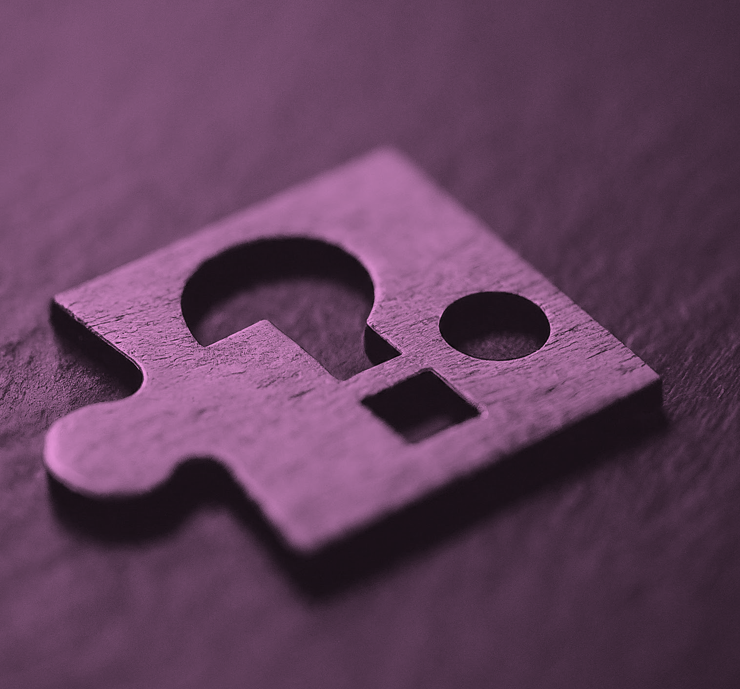
Don’t Let Anxiety Go Unchecked
It’s essential to recognize that there can be a fine line between anxiety and OCD. If your anxiety has been left unaddressed or has been difficult to manage, it’s worth being assessed for OCD. Misunderstanding the symptoms can lead to years of untreated or poorly treated OCD, contributing to unnecessary suffering.
Don’t be part of the statistic where proper treatment has been delayed. If you suspect that OCD might be the underlying cause of your struggles, seek out a specialist who understands the nuances of this condition. Early intervention and proper treatment can make all the difference in your journey to recovery.
OCD is a challenging condition, but with the right support, it is possible to regain control over your life. Don’t wait—take the first step towards proper diagnosis and treatment today.
Common Checking Compulsions
- Checking doors, windows, locks: Repeatedly checking that doors and windows are locked, often driven by a fear of intruders.
- Checking appliances: Constantly verifying that appliances like stoves, ovens, or irons are turned off to prevent a fire.
- Checking lights: Repeatedly ensuring that lights are turned off, often linked to concerns about wasting electricity or fire hazards.
- Checking emails or text messages: Obsessively reviewing sent messages to make sure there are no mistakes or that nothing inappropriate was said.
- Checking for mistakes: Continuously checking work, assignments, or documents to ensure there are no errors.
- Checking the body: Repeatedly examining oneself for signs of illness or physical imperfections, such as lumps or other abnormalities and sensations.
- Checking loved ones: Constantly checking on loved ones to make sure they are safe, often driven by a fear that something terrible might happen to them.
Replaying events: Mentally reviewing past conversations or events to ensure nothing inappropriate was said or done.
Other Common Compulsions in OCD
- Washing/cleaning compulsions:
- Excessive handwashing due to fear of contamination.
- Cleaning objects, surfaces, or oneself repeatedly.
- Avoiding touching objects that are perceived as contaminated.
- Repeating actions:
- Repeating certain movements or tasks, such as tapping, touching, or walking in a specific way, until it feels “just right.”
- Repeating phrases, words, or prayers mentally to prevent something bad from happening.
- Counting rituals:
- Counting objects, steps, or actions to a specific number that feels safe.
- Needing to do things a certain number of times (e.g., turning the light on and off exactly three times).
- Mental compulsions:
- Repeating certain words, prayers, or mantras mentally to neutralize anxiety.
- Replaying or analyzing thoughts or images in an attempt to make sense of them or prove that they are not dangerous.
- Reassurance-seeking:
- Asking others repeatedly for reassurance that everything is okay, that they are not in danger, or that they did not make a mistake.
- Reassurance-seeking can also involve researching online or in books to alleviate doubts or fears.
- Ordering/arranging compulsions:
- Placing objects in a specific order or symmetry until they feel “just right.”
- Rearranging items in a particular way to avoid bad outcomes.
- Avoidance behaviors:
- Avoiding certain places, people, or situations that trigger obsessions or compulsions.
- Avoiding the use of certain words or numbers that are considered unlucky or dangerous.
These compulsions can vary widely among individuals with OCD, and they are typically performed to reduce the anxiety or distress associated with intrusive thoughts. However, these behaviors often end up reinforcing the OCD cycle, making it essential to seek proper treatment
Understanding Obsessions and Compulsions in OCD
Obsessions and compulsions are the core features of Obsessive-Compulsive Disorder (OCD). Understanding the difference between them is crucial for recognizing the signs of OCD and seeking appropriate treatment.
What is an Obsession?
An obsession is an unwanted, intrusive thought, image, urge, or sensation that repeatedly enters a person’s mind, causing significant anxiety, distress, or discomfort. These thoughts are often disturbing or frightening, and despite the person’s efforts to ignore or suppress them, they persist.
Common characteristics of obsessions include:
- Intrusiveness: Obsessions feel like they are invading the person’s mind and are often difficult to control.
- Unwanted nature: The thoughts or images are not wanted and can be deeply distressing to the person experiencing them.
- Repetition: Obsessions occur over and over again, often leading to significant distress and a sense of being overwhelmed.
Themes: Obsessions can revolve around various themes, such as contamination, harm, religious or moral doubts, sexual thoughts, or symmetry.
What is a Compulsion?
A compulsion is a repetitive behavior or mental act that a person feels driven to perform in response to an obsession or according to rigid rules. The purpose of the compulsion is to reduce the anxiety or distress caused by the obsession, or to prevent a feared event or situation from occurring. However, these compulsions are not realistically connected to what they are intended to prevent or are clearly excessive.
Common characteristics of compulsions include:
- Repetitiveness: Compulsions are often repeated over and over, sometimes for hours at a time.
- Ritualistic nature: The behaviors or mental acts are performed in a very specific, often ritualistic way.
- Temporary relief: Compulsions may provide temporary relief from anxiety, but the relief is short-lived, and the obsession-compulsion cycle quickly resumes.
Impact on daily life: Compulsions can become time-consuming, taking up at least an hour per day and significantly interfering with daily functioning.
Understanding Obsessions and Compulsions in OCD
In OCD, obsessions and compulsions are linked in a vicious cycle:
- An obsession triggers intense anxiety or distress.
- A compulsion is performed in an attempt to neutralize or reduce the distress caused by the obsession.
- The compulsion may temporarily relieve the anxiety, but it reinforces the obsession, leading to the cycle starting all over again.
For example, a person might have an obsession about germs and contamination (obsession) and respond by washing their hands excessively (compulsion) to alleviate their fear of getting sick. Even though the handwashing may provide short-term relief, the fear of contamination will return, prompting more handwashing and perpetuating the cycle.
Understanding these aspects of OCD can help in recognizing the disorder and seeking effective treatment, such as Exposure and Response Prevention (Ex/Rp) therapy, which focuses on breaking this cycle by gradually exposing individuals to their fears without allowing them to engage in compulsions.
The Importance of Specialized OCD Treatment
Given the complex nature of OCD, it’s essential to work with a therapist who has specific training and understanding of the appropriate treatment for this disorder. Not all therapists are equipped to handle the intricacies of OCD, and finding one who is experienced in evidence-based treatments is crucial.
The gold standard for OCD treatment is Exposure and Response Prevention (Ex/Rp) therapy. This approach involves gradually exposing individuals to their obsessions while preventing the compulsions that usually follow, allowing them to learn that they can tolerate the distress without engaging in compulsive behaviors.
However, treating OCD effectively goes beyond just working with the individual. A well-trained therapist will also address family accommodation, which involves how family members, friends, or partners might unintentionally reinforce the OCD cycle by participating in or enabling compulsions. High levels of family accommodation can make OCD more severe and harder to treat. Therefore, reducing these accommodations is a vital part of a comprehensive treatment plan.
When OCD is moderate to severe, a combination of pharmacotherapy and Ex/Rp is often recommended. At Level Up Wellness Group, our nurse practitioner team can support appropriate medication management as part of your treatment plan.
Don’t Let OCD Go Untreated
Recognizing the signs of OCD and seeking specialized help can make a significant difference in your recovery journey. If you suspect that you or a loved one may be struggling with OCD, don’t wait—reach out to a therapist who understands the importance of evidence-based treatment and the role of family dynamics in OCD recovery. With the right support, it’s possible to break free from the cycle of obsessions and compulsions and reclaim control over your life.


